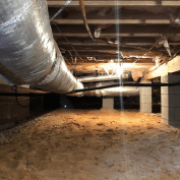Dry Rot – The Problem with Damp Proofing Membranes
Dry Rot
Damp proofing membranes are being used both in foundations and above ground to prevent the penetration of water in homes. These membranes offer various benefits including the following;
- They are a quick and easy solution to keeping homes dry. You don’t need any special training or tools to put up a damp proofing membrane. It is almost as simple as putting up wall paper.
- They are fast drying. You can have the membrane up and the wall ready for decorating on the same day depending on the size of the surface being covered. You don’t have to wait for ages for the membrane to dry or cure.
- They last a lifetime. You can be sure that your home will remain free of moisture for as long as you’ll be living in it. They are a great long term solution to moisture problems.
- They can be used on just about any surface. They are a versatile solution to keeping moisture out of the home.
There’s a Catch
While damp proofing membrane is a great and effective way to keep moisture out, it can cause a lot of problems if caution is not taken during its application. One common problem people experience when damp proofing membrane is not properly installed is dry rot.
The growth of dry rot may occur beneath the membrane and in some exposed parts of the home. This often occurs in homes that already have a moisture problem that was not properly addressed before the application of the damp proofing membrane.
How to Avoid Problems
- Avoid covering timber with the damp proofing membrane. This will only lock the fungus in and provide it with a great environment in which to thrive.
- Re-fix timber fixtures above damp proofing membranes. Stopping the membrane next to the timber will not solve the damp problem, but it put the timber against a damp surface and make matters worse.
- All damp areas should be covered. Extend the membrane well past the damp area. This will help to deal with the problem even as it grows.
- Take care of the humidity levels in your home. Just because you’ve installed damp proofing membranes doesn’t mean that your home will remain dry. Invest in a dehumidifier or other such unit to control indoor moisture levels.
Damp proofing can help to prevent dry rot in the long term when applied properly. Be sure to contact a waterproofing expert for assistance.
